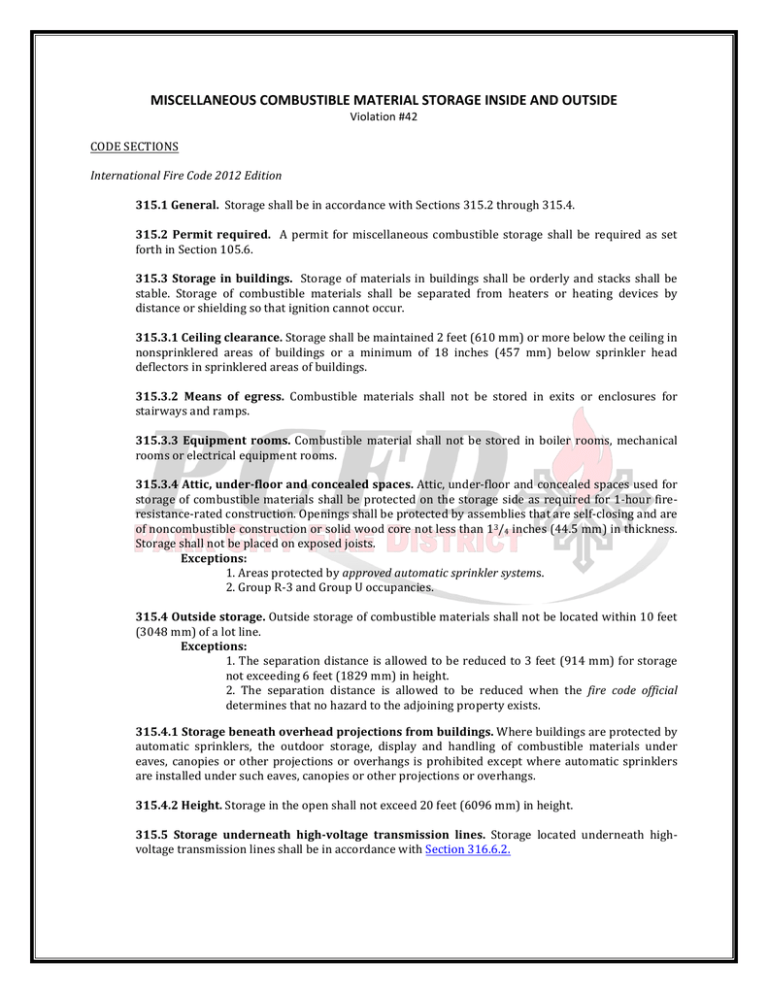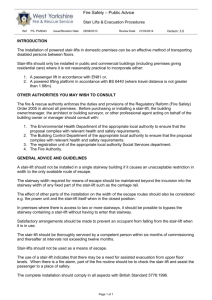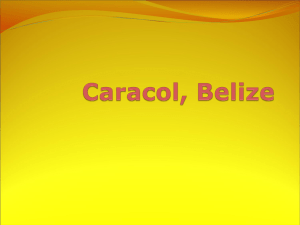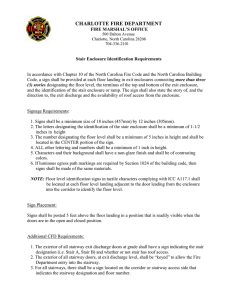miscellaneous combustible material storage inside and outside
advertisement

MISCELLANEOUS COMBUSTIBLE MATERIAL STORAGE INSIDE AND OUTSIDE Violation #42 CODE SECTIONS International Fire Code 2012 Edition 315.1 General. Storage shall be in accordance with Sections 315.2 through 315.4. 315.2 Permit required. A permit for miscellaneous combustible storage shall be required as set forth in Section 105.6. 315.3 Storage in buildings. Storage of materials in buildings shall be orderly and stacks shall be stable. Storage of combustible materials shall be separated from heaters or heating devices by distance or shielding so that ignition cannot occur. 315.3.1 Ceiling clearance. Storage shall be maintained 2 feet (610 mm) or more below the ceiling in nonsprinklered areas of buildings or a minimum of 18 inches (457 mm) below sprinkler head deflectors in sprinklered areas of buildings. 315.3.2 Means of egress. Combustible materials shall not be stored in exits or enclosures for stairways and ramps. 315.3.3 Equipment rooms. Combustible material shall not be stored in boiler rooms, mechanical rooms or electrical equipment rooms. 315.3.4 Attic, under-­‐floor and concealed spaces. Attic, under-­‐floor and concealed spaces used for storage of combustible materials shall be protected on the storage side as required for 1-­‐hour fire-­‐ resistance-­‐rated construction. Openings shall be protected by assemblies that are self-­‐closing and are of noncombustible construction or solid wood core not less than 13/4 inches (44.5 mm) in thickness. Storage shall not be placed on exposed joists. Exceptions: 1. Areas protected by approved automatic sprinkler systems. 2. Group R-­‐3 and Group U occupancies. 315.4 Outside storage. Outside storage of combustible materials shall not be located within 10 feet (3048 mm) of a lot line. Exceptions: 1. The separation distance is allowed to be reduced to 3 feet (914 mm) for storage not exceeding 6 feet (1829 mm) in height. 2. The separation distance is allowed to be reduced when the fire code official determines that no hazard to the adjoining property exists. 315.4.1 Storage beneath overhead projections from buildings. Where buildings are protected by automatic sprinklers, the outdoor storage, display and handling of combustible materials under eaves, canopies or other projections or overhangs is prohibited except where automatic sprinklers are installed under such eaves, canopies or other projections or overhangs. 315.4.2 Height. Storage in the open shall not exceed 20 feet (6096 mm) in height. 315.5 Storage underneath high-­‐voltage transmission lines. Storage located underneath high-­‐ voltage transmission lines shall be in accordance with Section 316.6.2. MISCELLANEOUS COMBUSTIBLE MATERIAL STORAGE INSIDE AND OUTSIDE Violation #42 (cont.) EXPLANATION No storage is allowed underneath a stairway unless one of two measures is taken to ensure the stairwell will not burn and collapse. The first is to completely enclose the underneath section of the stairway utilizing one-­‐hour fire-­‐resistive construction. A typical one-­‐hour rated fire construction consists of a minimum of two sheets of 5/8 inch thick Type “X” sheetrock, separated by an air gap, and a forty-­‐five minute fire rated door. The second means of protecting the stairway is to install automatic fire sprinklers under the stairway. No storage is allowed underneath stairways in an exit enclosure in any circumstance. RATIONALE In the event of a fire, occupants must be able to proceed down the stairway to an exit. Without any combustible storage under the stairway, no fires should start, as there is nothing to burn. However, if combustibles are stored under the stairway, a fire could start underneath a stairway causing the stairway to collapse thus destroying the means of escape. If however, by either enclosing the underneath of the stairway with one-­‐hour fire-­‐resistive construction or by installing automatic fire sprinklers, the fire should be held in check thus allowing sufficient time for the occupants to escape. If the stairway is located inside an exit enclosure, no storage what so ever is allowed under the stairs. The intent here is that the exit enclosure is constructed to maintain a smoke-­‐free exiting environment for the occupants. If we allow storage under the stairs, and a fire occurred in this storage, smoke could quickly envelope the enclosure thus creating a hazardous exit path.



